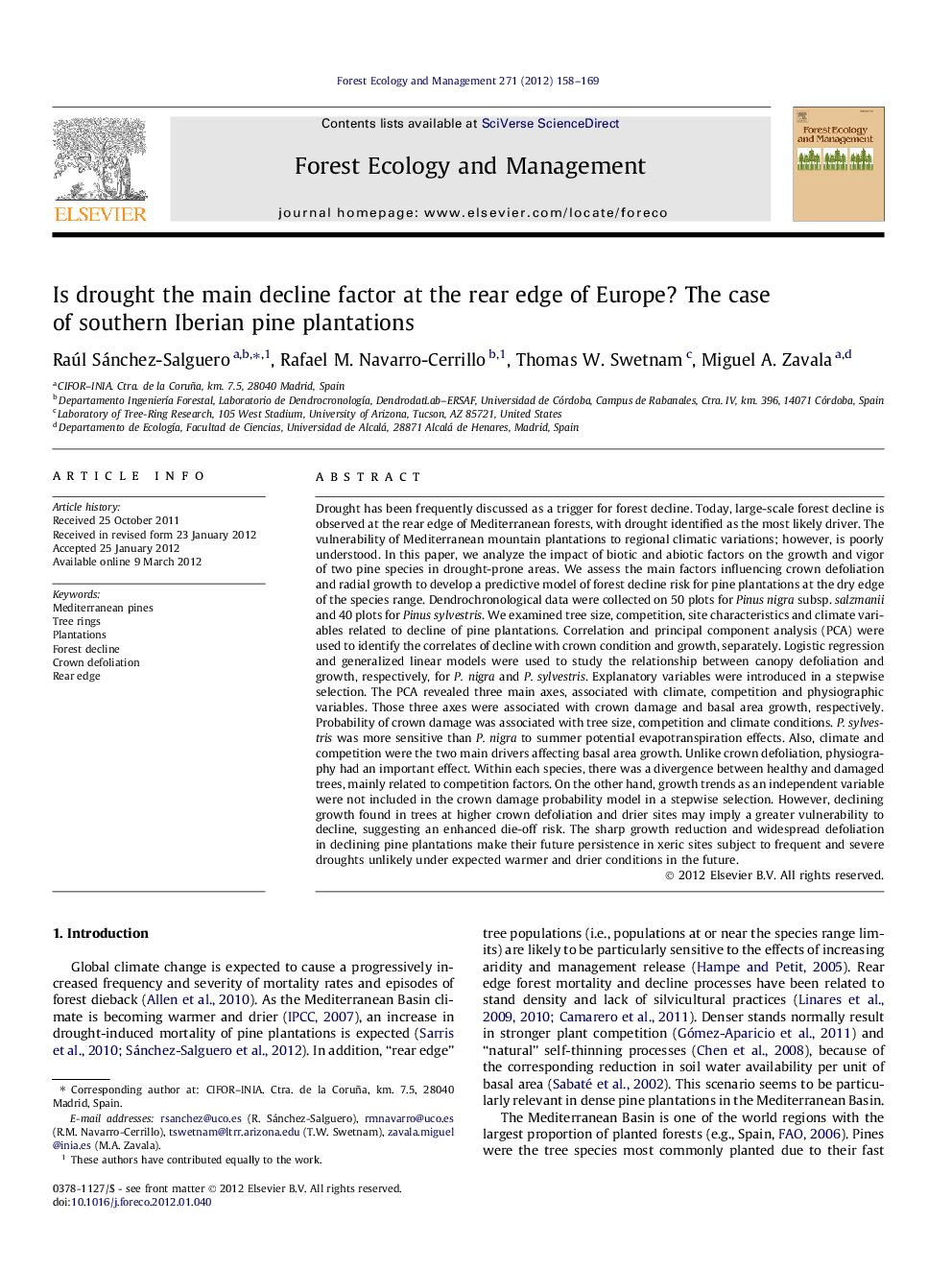| کد مقاله | کد نشریه | سال انتشار | مقاله انگلیسی | نسخه تمام متن |
|---|---|---|---|---|
| 87410 | 159249 | 2012 | 12 صفحه PDF | دانلود رایگان |

Drought has been frequently discussed as a trigger for forest decline. Today, large-scale forest decline is observed at the rear edge of Mediterranean forests, with drought identified as the most likely driver. The vulnerability of Mediterranean mountain plantations to regional climatic variations; however, is poorly understood. In this paper, we analyze the impact of biotic and abiotic factors on the growth and vigor of two pine species in drought-prone areas. We assess the main factors influencing crown defoliation and radial growth to develop a predictive model of forest decline risk for pine plantations at the dry edge of the species range. Dendrochronological data were collected on 50 plots for Pinus nigra subsp. salzmanii and 40 plots for Pinus sylvestris. We examined tree size, competition, site characteristics and climate variables related to decline of pine plantations. Correlation and principal component analysis (PCA) were used to identify the correlates of decline with crown condition and growth, separately. Logistic regression and generalized linear models were used to study the relationship between canopy defoliation and growth, respectively, for P. nigra and P. sylvestris. Explanatory variables were introduced in a stepwise selection. The PCA revealed three main axes, associated with climate, competition and physiographic variables. Those three axes were associated with crown damage and basal area growth, respectively. Probability of crown damage was associated with tree size, competition and climate conditions. P. sylvestris was more sensitive than P. nigra to summer potential evapotranspiration effects. Also, climate and competition were the two main drivers affecting basal area growth. Unlike crown defoliation, physiography had an important effect. Within each species, there was a divergence between healthy and damaged trees, mainly related to competition factors. On the other hand, growth trends as an independent variable were not included in the crown damage probability model in a stepwise selection. However, declining growth found in trees at higher crown defoliation and drier sites may imply a greater vulnerability to decline, suggesting an enhanced die-off risk. The sharp growth reduction and widespread defoliation in declining pine plantations make their future persistence in xeric sites subject to frequent and severe droughts unlikely under expected warmer and drier conditions in the future.
► We study forest decline process in Mediterranean plantations.
► Impact of biotic and abiotic factors were studied in two pine species in drought-prone areas.
► Logistic regression and GLM were used to study defoliation and growth.
► Tree size, competition and climate conditions were the most important variables.
► Thinning treatments could be used to mitigate the effects of climate change.
Journal: Forest Ecology and Management - Volume 271, 1 May 2012, Pages 158–169